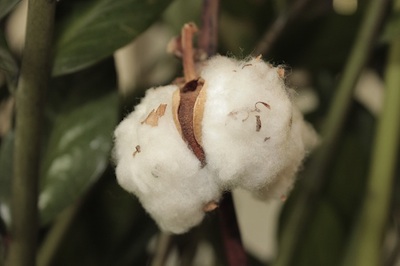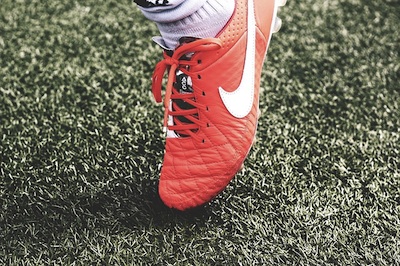

Why Eco-friendly Athletic Shoes Are Important to Our Planet’s Future
Eco-friendly. Sustainable. Green. These are popular buzzwords today when it comes to the health and safety of people as well as our environment. Most of us know about eco-friendly appliances and cleaning products, green building products, and organic foods – and many insist on supporting only these types of products. But what about eco-friendly athletic shoes?

In case you missed it or haven’t read about it elsewhere on this website, athletic shoes are enormously popular. Along with this popularity comes a growing responsibility for athletic shoe companies to cater to the wishes of its customers by offering eco-friendly products for the well-being of consumers and the environment. And companies, for the most part, are responding to this demand.
What is Sustainability and Why is it Important?
The dictionary defines sustainability as “the quality of not being harmful to the environment or depleting natural resources, and thereby supporting long-term ecological balance.” In other words, if something is sustainable or eco-friendly, it does as little harm to the environment as possible so that our planet continues the capacity to support an average quality of life.
Throughout history, people have used the earth’s resources at will and have developed technologies to improve efficiency and the quality of life. However, if we continue to give no thought to conserving resources and protecting the environment from harmful developments, then future generations won’t be able to enjoy all the good things we have created.

How Are Athletic Shoes a Danger to Sustainability?
Believe it or not, athletic shoes can effect the environment in many ways – through both the production process and consumer use. Here is a rundown:
- Manufacturing and shipping can create CO2 emissions.
- Many shoes are made from plastic molds, which leads to wasted materials when the molds are cut.
- Crude oil is used in making synthetic sneaker parts.
- Growing cotton used in canvas athletic shoes requires high chemical pesticides.
- The majority of athletic shoes are made in China, which usually relies on coal to power factories and machines for manufacturing.
- Shoe parts are often assembled with adhesives that can be toxic to the air, soil, and water.
- Retail stores require huge energy use, as do packing and delivery through online shopping.
- If shoes aren’t recycled, they can take 1,000 years to biodegrade in landfills.

What Are Manufacturers Doing to Create Eco-friendly Athletic Shoes?
As athletic shoe manufacturers take a look at their operating procedures, they are realizing that they need to dedicate more time and effort to making their products sustainable, thereby protecting people and the environment. Here are several ways shoe companies are going greener:
- Manufacturing shoes made of recyclable materials
- Eliminating wasted materials through development of knit and other one-piece uppers – examples include Nike Flyknit and Adidas Primeknit
- Moving to use clean energy sources in their manufacturing processes
- Minimizing the use of chemicals and water
Are Eco-friendly Athletic Shoes Available Now?
There are actually quite a few eco-friendly athletic shoes that are available now, and more that are in the development stages.
As far back as 2008, Brooks introduced a biodegradable midsole called BioMoGo that it now uses in most of its shoes. The foam material includes an additive that allows microbes to break it down when it’s dumped into a biologically active landfill. The process results in nontoxic byproducts after 20 years, which is a huge improvement over the 1,000 years it takes to break down a standard midsole. Brooks has made this technology available to other companies by putting it into the public domain, proving it’s more concerned about the environment than about the company’s bottom line.
In a partnership with the environmental organization Parley for the Oceans, Adidas has been making an athletic shoe almost entirely of garbage since 2015. They use ocean waste from the Great Pacific Garbage Patch, a huge pile of trash – mostly plastics – that is floating in the ocean. The shoes incorporate the plastic waste into its knit uppers.

In the North Pacific Ocean alone, there are about 40 million pounds of plastic waste floating. By the end of 2017, Adidas had manufactured over one million athletic shoes from ocean plastic – the equivalent of about 11 million water bottles.
Reebok is developing the first ever plant-based, compostable athletic shoe. The top will be made of organic cotton and the sole will be made of corn. The company eventually wants to make a range of plant-based shoes that you can compost when they wear out, and then that compost can be added to the soil used to grow new shoe materials.

Bill McInnis, vice president of Reebok’s Future Team that developed this initiative, said, “Typical shoes are made from oil-based plastics that can sit around in landfills for hundreds of years when you’re done with them. We’re focusing on creating shoes made from things that grow, made from things that bio-compost, made from things that can be replenished.”

Other companies are beginning to make eco-friendly athletic shoes by using wool, a material with a smaller carbon footprint than typical synthetic materials. Allbirds is leading this revolution, but New Balance, Keds, Converse, and a Swiss start-up called Baabuk are all dipping their toes into this trend. Baabuk is also making its soles from natural rubber, leather, or recycled tires.
What Can YOU Do to Support Sustainability?
Start by doing a little research when shopping for athletic shoes. Get an idea of what materials are used in your favorite brands and how they manufacture their products. With sustainability being a hot topic lately, it’s pretty easy to find information on athletic shoe websites about their environmental impact. If you’re not satisfied with your search results, consider choosing a brand that is more eco-friendly.
Recycle your used athletic shoes. Nike’s Reuse-A-Shoe program collects worn out athletic shoes to be recycled so they don’t end up in landfills. The recycled material is turned into a product called Nike Grind that is then used to create tennis and basketball courts, tracks, fields, playgrounds, and new equipment, apparel, and footwear. More than 1.5 million pairs of shoes are collected and recycled through this program each year.

Another way to keep used athletic shoes out of landfills is to donate them. If they are only “gently” worn and still in decent condition, you can donate them to a non-profit organization that can use them to help the needy. I have donated my used athletic shoes to places like Goodwill or the Salvation Army, and there are other non-profits like Soles 4 Souls and One World Running that distribute shoes to those who need them. I think many homeless shelters would take them as well.
It really is our responsibility to take care of our planet. You might feel like one person really can’t make a difference, but if we all make small changes, we can create a positive outcome for the future. Choosing eco-friendly athletic shoes is a great step in the right direction to preserving our planet for generations to come.
Note: As an Amazon Associate, I earn from qualifying purchases.
Related: Athletic Shoe Trends
